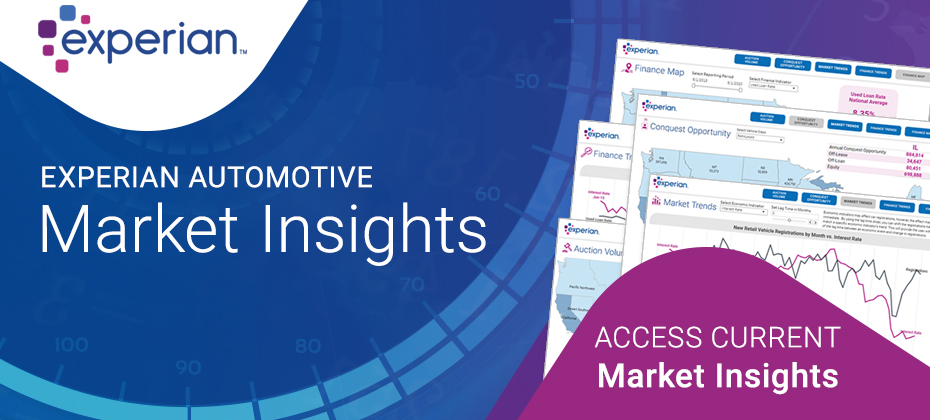Data & Analytics

The ongoing COVID-19 crisis and the associated rise in online transactions have made it more important than ever to keep customer information accurate and company databases up to date. By ensuring your organization’s data quality, you can allocate resources more effectively, minimize costs and safely serve your customers. As part of our recently launched Q&A perspective series, Suzanne Pomposello, Experian’s Strategic Account Director for CEM vertical markets, and William Palmer, Senior Sales Engineer, provided insight on how utility providers can manage and maintain accurate client data during system migrations and modernizations, achieve a single customer view and implement an operational data quality program. Check out what they had to say: Q: What are the best practices for effective data quality management that utility providers should follow? SP: To ensure data quality, we advise starting with a detailed understanding of the data your organization is currently maintaining and how new data entering your systems is being utilized. Conducting a baseline assessment and being able to properly validate the accuracy of your data is key to identifying areas that require cleansing and enrichment. Once you know what improvements and corrections need to be made, you can establish a strategy that will empower your organization to unlock the full potential of your data. Q: How does Experian help clients improve their data hygiene? SP: Experian has over 30 years of expertise in data cleansing, which is tapped to help clients deploy tactics and strategies to ensure an acceptable level of data integrity. First, we obtain a complete picture of each organizations objectives and challenges. We then assess the quality of their data and identify sources that require remediation. Armed with insight, we work alongside organizations to develop a phased action plan to standardize and enhance their data. Our data management solutions satisfy a wide range of needs and can be consumed in real-time, bulk and batch form. Q: Are there any protection regulations to be aware of when obtaining updated data? WP: Unlike Experian’s regulated divisions, most Experian Data Quality data elements are not burdened by complex regulations and restrictions. Our focus is on organizations’ main customer data points (e.g., address, email address and phone). We reference this data against unregulated source systems to validate, append and complete customer profiles. Experian’s data quality management tools can serve as a foundation for many regulatory, compliance and governance requirements, including, Metro 2 reporting, TCPA and CCPA. Q: Are demos of Experian’s data management solutions available? If so, where can they be accessed? WP: Yes, you can visit our website to view product functionality clips and recorded demonstrations. Additionally, we welcome the opportunity to explore our comprehensive data quality management tools via tests and live demonstrations using actual client data to gain a better understanding of how our solutions can be used to improve operational efficiency and the customer experience. For more insight on how to cleanse, standardize, and enhance your data to make sure you get the most out of your information, watch our Experian Symposium Series event on-demand. Watch now Learn more About Our Experts: Suzanne Pomposello, Strategic Account Director, Experian Data Quality, North America Suzanne manages the energy vertical for Experian’s Data Quality division, supporting North America. She brings innovative solutions to her clients by leveraging technology to deliver accurate and validated contact data that is fit for purpose. William Palmer, Senior Sales Engineer, Experian Data Quality, North America William is a Senior Sales Engineer for Experian’s Data Quality division, supporting North America. As an expert in the data quality space, he advises utility clients on strategies for immediate and long-term data hygiene practices, migrations and reporting accuracy.

With 2020 firmly behind us and multiple COVID-19 vaccines being dispersed across the globe, many of us are entering 2021 with a bit of, dare we say it, optimism. But with consumer spending and consumer confidence dipping at the end of the year, along with an inversely proportional spike in coronavirus cases, it’s apparent there’s still some uncertainty to come. This leaves businesses and consumers alike, along with fintechs and their peer financial institutions, wondering when the world’s largest economy will truly rebound. But based on the most recent numbers available from Experian, fintechs have many reasons to be bullish. In this unprecedented year, marked by a global pandemic and a number of economic and personal challenges for both businesses and consumers, Americans are maintaining healthy credit profiles and responsible spending habits. While growth expectedly slowed towards the end of the year, Q4 of 2020 saw solid job gains in the US labor market, with 883,000 jobs added through November and the US unemployment rate falling to 6.7%. Promisingly, one of the sectors hit hardest by the pandemic, the leisure and hospitality industry added back the most jobs of all sectors in October: 271,000. Additionally, US home sales hit a 14-year high fueled by record low mortgage rates. And finally, consumer sentiment rose to the highest level (81.4%) since March 2020. Not only are these promising signs of continued recovery, they illustrate there are ample market opportunities now for fintechs and other financial institutions. “It’s been encouraging to see many of our fintech partners getting back to their pre-COVID marketing levels,” said Experian Account Executive for Fintech Neil Conway. “Perhaps more promising, these fintechs are telling me that not only are response rates up but so is the credit quality of those applicants,” he said. More plainly, if your company isn’t in the market now, you’re missing out. Here are the four steps fintechs should take to reenter the lending marketing intelligently, while mitigating as much risk as possible. Re-do Your Portfolio Review Periodic portfolio reviews are standard practice for financial institutions. But the health crisis has posted unique challenges that necessitate increased focus on the health and performance of your credit portfolio. If you haven’t done so already, doing an analysis of your current lending portfolio is imperative to ensure you are minimizing risk and maximizing profitability. It’s important to understand if your portfolio is overexposed to customers in a particularly hard-hit industry, i.e. entertainment, or bars and restaurants. At the account level there may be opportunities to reevaluate customers based on a different risk appetite or credit criteria and a portfolio review will help identify which of your customers could benefit from second chance opportunities they may not have otherwise been able to receive. Retool Your Data, Analytics and Models As the pandemic has raged on, fintechs have realized many of the traditional data inputs that informed credit models and underwriting may not be giving the complete picture of a consumer. Essentially, a 720 in June 2020 may not mean the same as it does today and forbearance periods have made payment history and delinquency less predictive of future ability to pay. To stay competitive, fintechs must make sure they have access to the freshest, most predictive data. This means adding alternative data and attributes to your data-driven decisioning strategies as much as possible. Alternative data, like income and employment data, works to enhance your ability to see a consumer’s entire credit portfolio, which gives lenders the confidence to continue to lend – as well as the ability to track and monitor a consumer’s historical performance (which is a good indicator of whether or not a consumer has both the intention and ability to repay a loan). Re-Model Your Lending Criteria One of the many things the global health crisis has affirmed is the ongoing need for the freshest, most predictable data inputs. But even with the right data, analytics can still be tedious, prolonging deployment when time is of the essence. Traditional models are too slow to develop and deploy, and they underperform during sudden economic upheavals. To stay ahead in times recovery or growth, fintechs need high-quality analytics models, running on large and varied data sets that they can deploy quickly and decisively. Unlike many banks and traditional financial institutions, fintechs are positioned to nimbly take advantage of market opportunities. Once your models are performing well, they should be deployed into the market to actualize on credit-worthy current and future borrowers. Advertising/Prescreening for Intentional Acquisition As fintechs look to re-enter the market or ramp up their prescreen volumes to pre-COVID levels, it’s imperative to reach the right prospects, with the right offer, based on where and how they’re browsing. More consumers than ever are relying on their phones for browsing and mobile banking, but aligning messaging and offers across devices and platforms is still important. Here’s where data-driven advertising becomes imperative to create a more relevant experience for consumers, while protecting privacy. As 2021 rolls forward, there will be ample chance for fintechs to capitalize on new market opportunities. Through up-to-date analysis of your portfolio, ensuring you have the freshest, predictive data, adjusting your lending criteria and tweaking your approach to advertising and prescreen, you can be ready for the opportunities brought on by the economic recovery. How is your fintech gearing up to re-enter the market? Learn more

Experian Automotive Market Insights dashboard provides a variety of insights to help dealers tackle their biggest challenges.

Despite the constant narrative around “unprecedented times” and the “new normal,” if the current market volatility tells us anything, it’s to go back to basics. As financial institutions navigate COVID-19’s economic impact, and challenges that are likely to be different or more extreme than in the past, the best credit portfolio management practices are fundamental. The global pandemic impacts today’s data as existing data and analytics may not accurately reflect what is happening now, resulting in inaccurate portfolio assessment. In order to successfully navigate loss forecasting, predicting borrower behavior and controlling loss ratios, lenders must engage new data, analytics and economic scenarios suited for today’s changing times. In Experian’s latest white paper, “Credit Portfolio Management After the COVID-19 Recession,” we’ll explore best practices to combat the following challenges: Forecasting credit losses despite increased economic volatility Businesses have long used a variety of data, analytics and models to anticipate and project the future direction of their organization based on a number of data points; however, with the onset of the global pandemic, long-standing scenarios became suddenly irrelevant. Predicting borrower behavior given increased financial disparities The post-pandemic and pre-pandemic worlds are very different places for some borrowers. Pandemic-related job losses and other economic effects will not be spread evenly and this variability may be reflected in lenders’ portfolios. Controlling loss ratios In the post-COVID world, it will be mission critical for lenders to use high-quality and up-to-date data to balance priorities and identify which areas of their portfolio need attention now. Whether your portfolio is doing better than expected, as expected, or worse than expected, now is the time to refresh portfolio management strategy. Lenders should be watching for early indicators in loan portfolios to better navigate a fluctuating economy and that requires new resources and better tools. Take control of your business’ trajectory. Download now

Small SUVs became the most financed vehicle segment in Q3 2020, making up 26.01% of all financed vehicles during the quarter.

2020 is finally over – been there, done that. And while it seems safe to say most everyone is all too eager to kick off a new calendar year, the reality is we’re still reeling – and will continue to reel – through the economic impacts of the COVID-19 global pandemic. As we inch closer to the one year marker of when many businesses were sent home – across all industries, including those tech-inclined and those less so – the understatement of the year is that the world has since changed as have consumer communication preferences, how businesses and customers interact, tweaked definitions of privacy, and new (heightened) expectations of evolving a positive customer experience with minimal friction and maximum security. While last year’s predictions of entering a new set of Roaring 20’s may not have panned out the way we had initially imagined, many of the trends thought to evolve over the last 365 days did. As we all look toward a post-pandemic world, here are six top trends to keep tabs on throughout 2021. 1. Data Data as a commodity and as a business differentiating factor has reached an all-time high. It’s doing more across the entire customer lifecycle and can elevate businesses to best prep for growth, especially as consumers begin to look for more financial products (whether looking for financial assistance as the CARES Act accommodation period ends, or to take advantage of the booming mortgage industry, etc.). Data can also give more insights into consumers than ever before. Far beyond just credit scores and financial data, today’s data sets can reveal consumers’ lifestyle preferences, their preferred communication channels, their rental histories, and so much more. With alternative credit data and non-traditional data (including consumer-permissioned data), businesses can get a holistic picture of their customers’ payment behaviors. That streaming media service monthly payment may seem minimal, but now could increase your credit score through Experian Boost. Experian is still making big strides in all efforts to use data for good. As of December 31, 2020, Experian Boost has “boosted” Americans’ credit scores nearly 47 million points. Additionally, throughout 2020, Experian worked with financial institutions and credit furnishers to continue to put consumers first and serve as the consumer’s bureau. Coming up in 2021? Using data for differentiation, which can ultimately drive business growth. From instant prescreens to identifying your best customers (and offering them cross-sell and upsell opportunities to increase retention and customer loyalty) to helping customers that may be on the brink of financial distress and connecting them with management solutions to help them get back on their feet, data can help businesses – and their customers – get there. 2. Fraud and Friction (And the Reduction of Both) With the pandemic, fraud saw increases across the board. Here are just some quick stats: 200% increase in first-time online banking usage immediately following shelter-in-place orders (Aite Group, “Workplace Distancing: Adapting Fraud and AML Operations to COVID-19,” April 2020) 652% year-over-year increase in records found on the dark web (Experian CyberAgent technology) 50% increase in human farming – real people being hired for purposes of fraud – month-over-month in March 2020 (Arkose Labs) And, unsurprisingly, consumer and business sentiments toward fraud are also evolving with these increasing trends. For example, according to Experian’s North America Trends Report, half of consumers continue to site security as the most important factor of their online experience. Additionally, there’s been an increase in the percentage of businesses who have recently increased or are planning to increase fraud budget from 76% in 2019 to 89% as of Sept. 2020. More complex phishing schemes and increased fraudster activity is due in part to numerous industries having to shift to online processes and business transactions overnight. Adoption for mobile wallets has jumped 11% since July 2020, according to the 2020 Global Insights Report. Systems and technology that were not ready or not armed with the necessary infrastructure left critical access points open that could be exploited by fraudsters. Fraud exists across the customer lifecycle, at every access point. And while fraud is complex, with Experian as your partner, solving it isn’t. Innovative technology enables businesses to prevent fraud by identifying credible customers and applying the correct treatment to the riskiest consumer and business accounts. We can help you develop a layered risk management strategy so you can focus resources on growing and protecting your customer relationships. 3. A New Administration – Changing of the Guards on the Regulatory Front With the new year enters the inauguration of a new president and administration. Though there is still much to be determined, certain areas are drawing a lot of attention with this changing of the guards. The highlights? The CFPB. Priorities and leadership could change. With COVID-19 top of mind, it is likely there will be aggressive agendas put forth to help protect the millions of consumers who have suffered economic distress and harm as a result of the pandemic. Data Portability. With an increased consumer appetite to port their data, questions and concerns around data security – and how to verify for a third party asking for the data – are also on the rise. There are a number of issues facing financial institutions around data portability, one of the largest being defining the line between consumer account information and proprietary data. All things privacy – state vs. national bills. The debate continues on how to move forward (whether privacy legislation will be handled by the states or at the national level), but for now it seems there is more progress at the state level. California was the first state to push through state-level privacy legislation in the form of the California Consumer Privacy Act of 2018. Twenty-four states are considering legislation that would require consent before collecting or disclosing personal information with third parties. 4. Analytics + Digitalization – Smarter, Better, Faster COVID-19 accelerated digital transformation for many. Some companies were ready, having already started making the headway in years prior, while others struggled – and some continue to struggle. The pandemic – and its corresponding recovery – is reason now, more than ever, to get some of your digital transformation priorities checked off of your list. Your customers demand it and your business needs it. Tackling analytics and digitalization not only brings your business up to speed, but improves your decisioning, enhances your offerings, and enables better platforms and data usage. In addition to digitalization, artificial intelligence for credit decisioning and personalized banking can also be expected to be a top trend, especially AI that is ethical and explainable, as will the increasing adoption and implementation of cloud computing. As consumer experience continues to reign supreme, any and all technology to enhance and improve that experience – think chatbots and virtual assistants – will also likely increase in presence. 5. Verification & Identity Identity has been a trending topic over the last few years, brought on by increasingly digital lifestyles and the intersection of personalization, frictionless transactions and adequate security. Identity verification and verification of other information such as income, employment and the like are increasingly needed in a today’s pandemic and tomorrow’s post-pandemic world. Leveraged across the lifecycle and during critical customer interactions, the need is especially heightened for insights, data accuracy, and diversification of data sets – to name a few. And while it was already established that identity verification is not just for marketing services, there are now even greater needs for financial institutions to be able to confidently know that their customers are who they say they are. Some areas to keep your eye on in 2021? Identity, income, assets and employment. 6. Redefining the Modern Mortgage As has been a common trend, spurred by the disruption caused by COVID-19, the mortgage industry is one of the many to have a magnifying glass brought to its areas for improvement. Some of those areas include operational efficiency, digital adoption and transparency. In line with the better and faster needs that lenders are continually trying to pace with, the need for speed is hitting mortgage originations, with an ideal situation outlined as closing in 30 days or less. Creating operational efficiencies through faster, fresher data can be the key for lenders to more accurately assess a borrower’s ability to pay upfront. Additionally, now, as most mortgage lenders are breaking previous origination records by a landslide (thanks pandemic), there’s new focus on other performance indicators. With such impetus, the modern mortgage is constantly evolving, incorporating customer-centric facets including a seamless digital process, providing meaningful customer experiences and leveraging the latest and greatest technology to better future-proof the industry through scalable technology, while aiming to reduce costs. For all your needs in 2021 and beyond, Experian has you covered. Learn More

No two customers are the same. That’s why it’s important to go beyond the traditional credit score for a closer look at each consumer’s individual circumstance and create personalized response plans. Learn more about some of the many different customers you’ll encounter and download our guide to get recommendations for every stage of the lifecycle. Get the Guide

According to Experian’s Q3 2020 State of the Automotive Finance Market report, 26.20% of all new vehicles are leased compared to 30.27% last year.

It’s clear that the digital transformation we experienced this year is here to stay. While there are many positives associated with this transformation – innovation, new ways to work, and greater online connectedness – it’s important that we review the risks associated with these trends as well. In late 2019 and throughout 2020, Experian surveyed consumers and businesses. We asked about online habits, expectations for information security and plans for future spending. Unsurprisingly, about half of consumers think they’ll continue to spend more online in the coming year. Those same consumers now have a higher expectation for their online experience than before the onset of COVID-19. Hand-in-hand with the online activity trends come increased risks associated with identity theft and fraud as criminals find new chances to steal information. In response to both of these trends, businesses and consumers want a balance between security and convenience. Our latest trends report dives into the new opportunities 2020 has created for fraud, and the opportunities to prevent identity theft or manipulation and the associated losses while building stronger relationships. Download the full North America Trends Report for a look into North American trends over the last year and to learn how fraud prevention and positive customer relationships are actually two sides of the same coin. North America Trends Report

While things aren't quite back to normal in Q3 2020, there were a number of positive trends that demonstrates the automotive industry's resilience.

Financial services companies have long struggled to make inclusive decisions for small businesses and for low- and moderate-income consumers. One key reason: to make accurate predictions of the financial risks associated with those customers’ accounts requires lenders to rely on a wider variety of data than a credit score alone. To accurately assess risk, expanded Fair Credit Reporting Act regulated data is helpful – including rental data, trended data, enhanced public records, alternative financial services data and more. This expanded FCRA data is one key to financial inclusion. Without that data, lenders risk rejecting potentially profitable customers, including so-called credit invisibles and thin file consumers. In fact, The Federal Reserve, along with four important financial services regulators, highlighted the consumer benefits of alternative data in their December 2019 interagency statement. That statement also highlighted the increased importance of managing compliance when firms use alternative data in credit underwriting. With hundreds of data sources available to help with important tasks such as verifying identity, checking credit, and assessing the value of automotive and real-estate collateral, why have some lenders been slow to use the most appropriate data attributes when making credit decisions? One reason is a matter of IT Architecture; another is priorities. Changing a business process to take advantage of new data requirements can be prohibitively lengthy and costly – in terms of both analytical and IT resources. This is especially true for older systems—which were seldom adapted to use Application Programming Interfaces (APIs) supporting modern data structures such as JSON. Furthermore, data access to older systems can require specific types of system connectivity such as VPNs or leased lines. Latency is important in this type of application: some of these tasks have to be done instantly in a digital-first or digital-only lending environment. So is time to market: lenders deploying analytics processes cannot wait for overtaxed IT teams to complete lengthy projects. Lenders’ analytics and IT teams have long known they need to be more agile and efficient, faster to market, and increasingly secure. Their answer, largely, has been a slow but steady migration of their systems to the cloud. A 2019 McKinsey survey revealed that CIOs were modernizing their infrastructures primarily to achieve four goals: agility and time to market, quality and reliability, cost, and security. There are other benefits as well. But if the business case for a cloud strategy was somewhat clear to IT and analytics leaders, it became crystal clear to the rest of the business in 2020. As companies shifted to at-home work using cloud-based collaboration tools, especially videoconferencing services, most companies conquered what was perhaps the final barrier to entry—the fear that the issues of data privacy and security were somehow more insurmountable with virtual machines, containers, and microservices than with on-premise infrastructure. Last quarter, the leading cloud providers Amazon Web Services, Google Cloud Platform, and Microsoft Azure reported incredible annual revenue growth: 29%, 45%, and 48% respectively. COVID-19 has proven to be the catalyst that greatly sped up the transition to cloud technologies. The jump to the cloud means that lenders are suddenly more capable than ever at making analytically sound – and therefore more financially inclusive decisions. The key to analytical decision-making is to use the right data and to make the most appropriate calculations (called attributes) as part of a business strategy or a mathematical model. With Experian programs such as Attribute Toolbox now available in the cloud, calculating those all-important attributes is as simple for the IT department as coding an API call. Lenders will soon be able just as easily to retrieve and process raw data from over 100 data sources, to recognize their native formats and to extract the desired information quickly enough for real-time and batch decisioning. The pandemic has brought economic distress to millions of Americans—it is unlike anything in our lifetimes. The growth of cloud computing promises to enable these consumers to obtain additional products as well as more favorable pricing and terms. It’s ironic that COVID has accelerated the adoption of the very technologies that will expand access to credit for many people who cannot currently access it from mainstream financial firms. To learn more about our Attribute Toolbox, click here. Learn More

New challenges created by the COVID-19 pandemic have made it imperative for utility providers to adapt strategies and processes that preserve positive customer relationships. At the same time, they must ensure proper individualized customer treatment by using industry-specific risk scores and modeled income options at the time of onboarding As part of our ongoing Q&A perspective series, Shawn Rife, Experian’s Director of Risk Scoring, sat down with us to discuss consumer trends and their potential impact on the onboarding process. Q: Several utility providers use credit scoring to identify which customers are required to pay a deposit. How does the credit scoring process work and do traditional credit scores differ from industry-specific scores? The goal for utility providers is to onboard as many consumers as possible without having to obtain security deposits. The use of traditional credit scoring can be key to maximizing consumer opportunities. To that end, credit can be used even for consumers with little or no past-payment history in order to prove their financial ability to take on utility payments. Q: How can the utilities industry use consumer income information to help identify consumers who are eligible for income assistance programs? Typically, income information is used to promote inclusion and maximize onboarding, rather than to decline/exclude consumers. A key use of income data within the utility space is to identify the eligibility for need-based financial aid programs and provide relief to the consumers who need it most. Q: Many utility providers stop the onboarding process and apply a larger deposit when they do not get a “hit” on a certain customer. Is there additional data available to score these “no hit” customers and turn a deposit into an approval? Yes, various additional data sources that can be leveraged to drive first or second chances that would otherwise be unattainable. These sources include, but are not limited to, alternative payment data, full-file public record information and other forms of consumer-permissioned payment data. Q: Have you noticed any employment trends due to the COVID-19 pandemic? How can those be applied at the time of onboarding? According to Experian’s latest State of the Economy Report, the U.S. labor market continues to have a slow recovery amidst the current COVID-19 crisis, with the unemployment rate at 7.9% in September. While the ongoing effects on unemployment are still unknown, there’s a good chance that several job/employment categories will be disproportionately affected long-term, which could have ramifications on employment rates and earnings. To that end, Experian has developed exclusive capabilities to help utility providers identify impacted consumers and target programs aimed at providing financial assistance. Ultimately, the usage of income and employment/unemployment data should increase in the future as it can be highly predictive of a consumer’s ability to pay For more insight on how to enhance your collection processes and capabilities, watch our Experian Symposium Series event on-demand. Watch now Learn more About our Experts: Shawn Rife, Director of Risk Scoring, Experian Consumer Information Services, North America Shawn manages Experian’s credit risk scoring models while empowering clients to maximize the scope and influence of their lending universe. He leads the implementation of alternative credit data within the lending environment, as well as key product implementation initiatives.

The global pandemic has created major shifts in the ways companies operate and innovate. For many organizations, a heavy reliance on cloud applications and cloud services has become the new normal, with cloud applications being praised as “an unsung hero” for accommodating a world in crisis, as stated in an article from the Channel Company. However, cloud computing isn’t just for consumers and employees working from home. In the last few years, cloud computing has changed the way organizations and businesses operate. Cloud-based solutions offer the flexibility, reduced operational costs and fast deployment that can transform the ways traditional companies operate. In fact, migrating services and software to the cloud has become one of the next steps to a successful digital transformation. What is cloud computing? Simply put – it’s the ability to run applications or software from remote servers, hosted by external providers, also known as infrastructure-as-a-service (IaaS). Data collected from cloud computing is stored online and is accessed via the Internet. According to a study by CommVault, more than 93% of business leaders say that they are moving at least some of their processes to the cloud, and a majority are already cloud-only or plan to completely migrate. In a recent Forrester blog titled ‘Troubled Times Test Traditional Tech Titans,’ Glenn O’Donnell, Vice President, Research Director at Forrester highlights that “as we saw in prior economic crises, the developments that carried business through the crisis remained in place. As many companies shift their infrastructure to cloud services through this pandemic, those migrated systems will almost certainly remain in the cloud.” In short, cloud computing is the new wave – now more than ever during a crisis. But what are the benefits of moving to the cloud? Flexibility Cloud computing offers the flexibility that companies need to adjust to fluctuating business environments. During periods of unexpected growth or slow growth, companies can expand to add or remove storage space, applications, or features and scale as needed. Businesses will only have to pay for the resources that they need. In a pandemic, having this flexibility and easy access is the key to adjusting to volatile market conditions. Reduced operational costs Companies (big or small) that want to reduce costs from running a data center will find that moving to the cloud is extremely cost-effective. Cloud computing eliminates the high cost of hardware, IT resources and maintaining internal and on-premise data systems. Cloud-based solutions can also help organizations modernize their IT infrastructures and automate their processes. By migrating to the cloud, companies will be able to save substantial capital costs and see a higher return on investment – while maintaining efficiency. Faster deployment With the cloud, companies get the ability to deploy and launch programs and applications quickly and seamlessly. Programs can be deployed in days as opposed to weeks – so that businesses can operate faster and more efficiently than ever. During a pandemic, faster deployment speeds can help organizations accommodate, make updates to software and pivot quickly to changing market conditions. Flexible, scalable, and cost-effective solutions will be the keys to thriving during and after a pandemic. That’s why we’ve enhanced a variety of our solutions to be cloud-based – to help your organization adapt to today’s changing customer needs. Solutions like our Attribute Toolbox are now officially on the cloud, to help your organizations make better, faster, and more effective decisions. Learn More

Intuitively we all know that people with higher credit risk scores tend to get more favorable loan terms. Since a higher credit risk score corresponds to lower chance of delinquency, a lender can grant: a higher credit line, a more favorable APR or a mix of those and other loan terms. Some people might wonder if there is a way to quantify the relationship between a credit risk score and the loan terms in a more mathematically rigorous way. For example, what is an appropriate credit limit for a given score band? Early in my career I worked a lot with mathematical optimization. This optimization used a software product called Marketswitch (later purchased by Experian). One caveat of optimization is in order to choose an optimal decision you must first simulate all possible decisions. Basically, one decision cannot be deemed better than another if the consequences of those decisions are unknown. So how does this relate to credit risk scores? Credit scores are designed to give lenders an overall view of a borrower’s credit worthiness. For example, a generic risk score might be calibrated to perform across: personal loans, credit cards, auto loans, real estate, etc. Per lending category, the developer of the credit risk score will provide an “odds chart;” that is, how many good outcomes can you expect per bad outcome. Here is an odds chart for VantageScore® 3 (overall - demi-decile). Score Range How Many Goods for 1 Bad 823-850 932.3 815-823 609.0 808-815 487.6 799-808 386.1 789-799 272.5 777-789 228.1 763-777 156.1 750-763 115.6 737-750 85.5 723-737 60.3 709-723 45.1 693-709 33.0 678-693 24.3 662-678 18.3 648-662 14.1 631-648 10.8 608-631 7.9 581-608 5.5 542-581 3.5 300-542 1.5 Per the above chart, there will be 932.3 good accounts for every one “bad” (delinquent) account in the score range of 823-850. Now, it’s a simple calculation to turn that into a bad rate (i.e. what percentage of accounts in this band will go bad). So, if there are 932.3 good accounts for every one bad account, we have (1 expected bad)/(1 expected bad + 932.3 expected good accounts) = 1/(1+932.3) = 0.1071%. So, in the credit risk band of 823-850 an account has a 0.1071% chance of going bad. It’s very simple to apply the same formula to the other risk bands as seen in the table below. Score Range How Many Goods for 1 Bad Bad Rate 823-850 932.3 0.1071% 815-823 609.0 0.1639% 808-815 487.6 0.2047% 799-808 386.1 0.2583% 789-799 272.5 0.3656% 777-789 228.1 0.4365% 763-777 156.1 0.6365% 750-763 115.6 0.8576% 737-750 85.5 1.1561% 723-737 60.3 1.6313% 709-723 45.1 2.1692% 693-709 33.0 2.9412% 678-693 24.3 3.9526% 662-678 18.3 5.1813% 648-662 14.1 6.6225% 631-648 10.8 8.4746% 608-631 7.9 11.2360% 581-608 5.5 15.3846% 542-581 3.5 22.2222% 300-542 1.5 40.0000% Now that we have a bad percentage per risk score band, we can define dollars at risk per risk score band as: bad rate * loan amount = dollars at risk. For example, if the loan amount in the 823-850 band is set as $10,000 you would have 0.1071% * $10,000 = $10.71 at risk from a probability standpoint. So, to have constant dollars at risk, set credit limits per band so that in all cases there is $10.71 at risk per band as indicated below. Score Range How Many Goods for 1 Bad Bad Rate Loan Amount $ at Risk 823-850 932.3 0.1071% $ 10,000.00 $ 10.71 815-823 609.0 0.1639% $ 6,535.95 $ 10.71 808-815 487.6 0.2047% $ 5,235.19 $ 10.71 799-808 386.1 0.2583% $ 4,147.65 $ 10.71 789-799 272.5 0.3656% $ 2,930.46 $ 10.71 777-789 228.1 0.4365% $ 2,454.73 $ 10.71 763-777 156.1 0.6365% $ 1,683.27 $ 10.71 750-763 115.6 0.8576% $ 1,249.33 $ 10.71 737-750 85.5 1.1561% $ 926.82 $ 10.71 723-737 60.3 1.6313% $ 656.81 $ 10.71 709-723 45.1 2.1692% $ 493.95 $ 10.71 693-709 33.0 2.9412% $ 364.30 $ 10.71 678-693 24.3 3.9526% $ 271.08 $ 10.71 662-678 18.3 5.1813% $ 206.79 $ 10.71 648-662 14.1 6.6225% $ 161.79 $ 10.71 631-648 10.8 8.4746% $ 126.43 $ 10.71 608-631 7.9 11.2360% $ 95.36 $ 10.71 581-608 5.5 15.3846% $ 69.65 $ 10.71 542-581 3.5 22.2222% $ 48.22 $ 10.71 300-542 1.5 40.0000% $ 26.79 $ 10.71 In this manner, the output is now set credit limits per band so that we have achieved constant dollars at risk across bands. Now in practice it’s unlikely that a lender will grant $1,683.27 for the 763 to 777 credit score band but this exercise illustrates how the numbers are generated. More likely, a lender will use steps of $100 or something similar to make the credit limits seem more logical to borrowers. What I like about this constant dollars at risk approach is that we aren’t really favoring any particular credit score band. Credit limits are simply set in a manner that sets dollars at risk consistently across bands. One final thought on this: Actual observations of delinquencies (not just predicted by the scores odds table) could be gathered and used to generate a new odds tables per score band. From there, the new delinquency rate could be generated based on actuals. Though, if this is done, the duration of the sample must be long enough and comprehensive enough to include both good and bad observations so that the delinquency calculation is robust as small changes in observations can affect the final results. Since the real world does not always meet our expectations, it might also be necessary to “smooth” the odds-chart so that its looks appropriate.

Enterprise Security Magazine recently named Experian a Top 10 Fraud and Breach Protection Solutions Provider for 2020. Accelerating trends in the digital economy--stemming from stay-at-home orders and rapid increases in e-commerce and government funding--have created an attractive environment for fraudsters. At the same time, there’s been an uptick in the amount of personally identifiable information (PII) available on the dark web. This combination makes innovative fraud and breach solutions more crucial than ever. Enterprise Security Magazine met with Kathleen Peters, Experian’s Chief Innovation Officer, and Michael Bruemmer, Vice President of Global Data Breach and Consumer Protection, to discuss COVID-19 digital trends, the need for robust fraud protection, and how Experian’s end-to-end breach protection services help businesses protect consumers from fraud. According to the magazine, “With Experian’s best in class analytics, clients can rapidly respond to ever-changing environments by utilizing offerings such as CrossCore® and Sure ProfileTM to identify and prevent fraud.” In addition to our commitment to develop new products to combat the rising threat of fraud, Experian is focused on helping businesses minimize the consequences of a data breach. The magazine noted that, “To serve as a one-stop-shop for data breach protection, Experian offers a wide range of auxiliary services such as incident management, data breach notification, identity protection, and call center support.” We are continuously working to create and integrate innovative and robust solutions to prevent and manage different types of data breaches and fraud. Read the full article Contact us